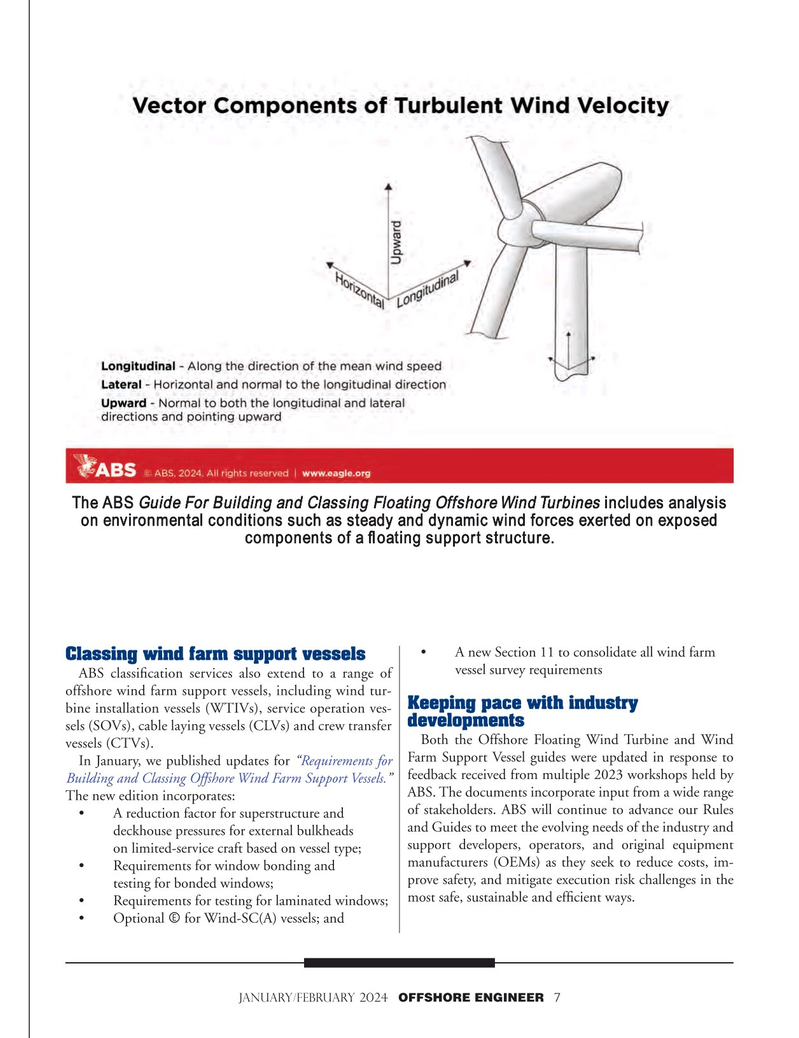
Page 7: of Offshore Engineer Magazine (Jan/Feb 2024)
Read this page in Pdf, Flash or Html5 edition of Jan/Feb 2024 Offshore Engineer Magazine
The ABS Guide For Building and Classing Floating Offshore Wind Turbines includes analysis on environmental conditions such as steady and dynamic wind forces exerted on exposed components of a foating support structure.
• A new Section 11 to consolidate all wind farm
Classing wind farm support vessels
ABS classifcation services also extend to a range of v essel survey requirements offshore wind farm support vessels, including wind tur-
Keeping pace with industry bine installation vessels (WTIVs), service operation ves- developments sels (SOVs), cable laying vessels (CLVs) and crew transfer
Both the Offshore Floating Wind Turbine and Wind vessels (CTVs).
In January, we published updates for “Requirements for Farm Support Vessel guides were updated in response to
Building and Classing Offshore Wind Farm Support Vessels.” feedback received from multiple 2023 workshops held by
ABS. The documents incorporate input from a wide range
The new edition incorporates: of stakeholders. ABS will continue to advance our Rules • A reduction factor for superstructure and and Guides to meet the evolving needs of the industry and deckhouse pressures for external bulkheads support developers, operators, and original equipment on limited-service craft based on vessel type; manufacturers (OEMs) as they seek to reduce costs, im- • Requirements for window bonding and prove safety, and mitigate execution risk challenges in the testing for bonded windows; most safe, sustainable and effcient ways.
• Requirements for testing for laminated windows; • Optional ? for Wind-SC(A) vessels; and january/february 2024 OFFSHORE ENGINEER 7

 6
6

 8
8